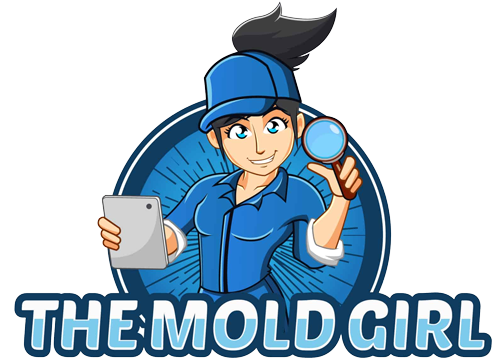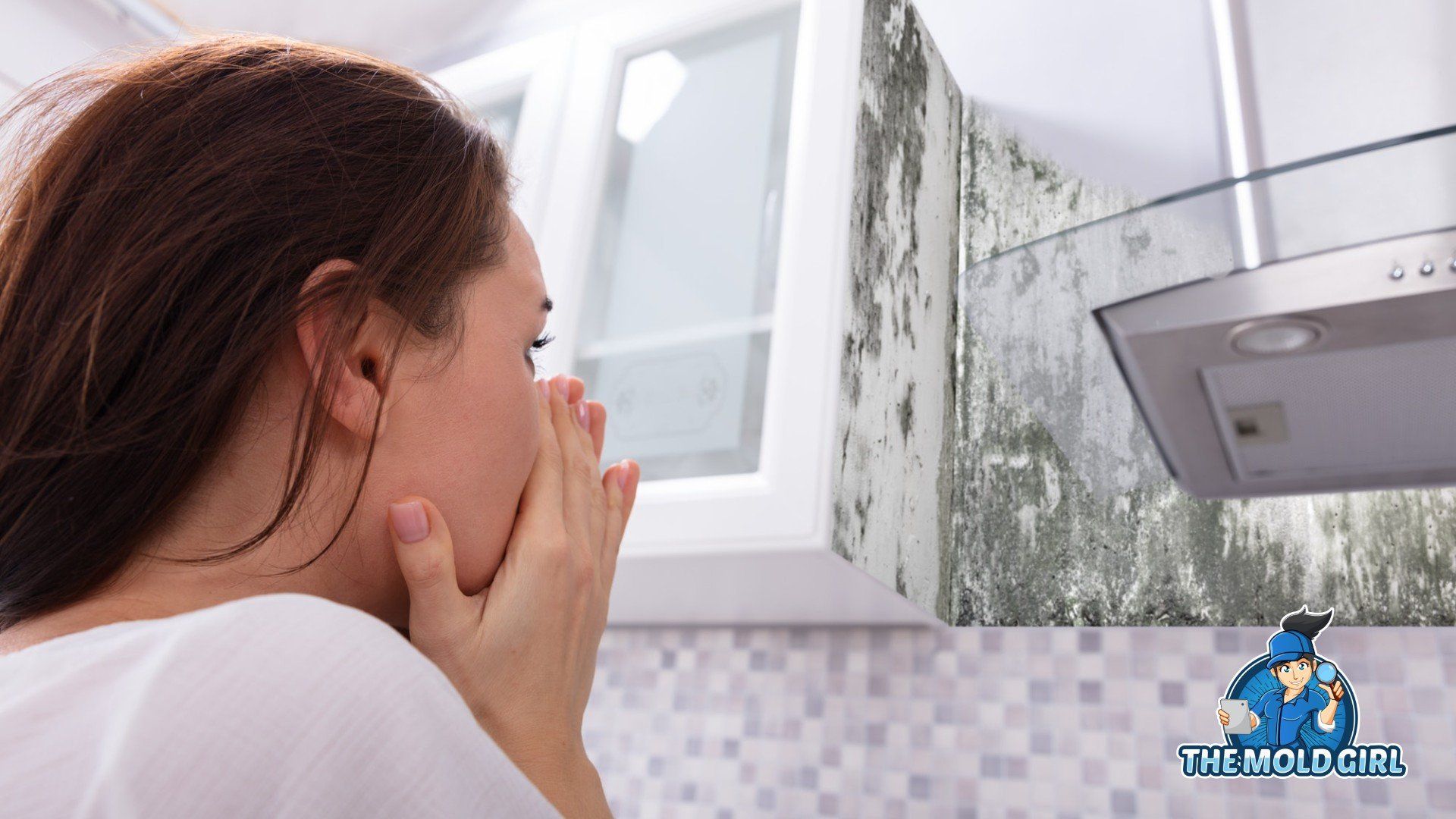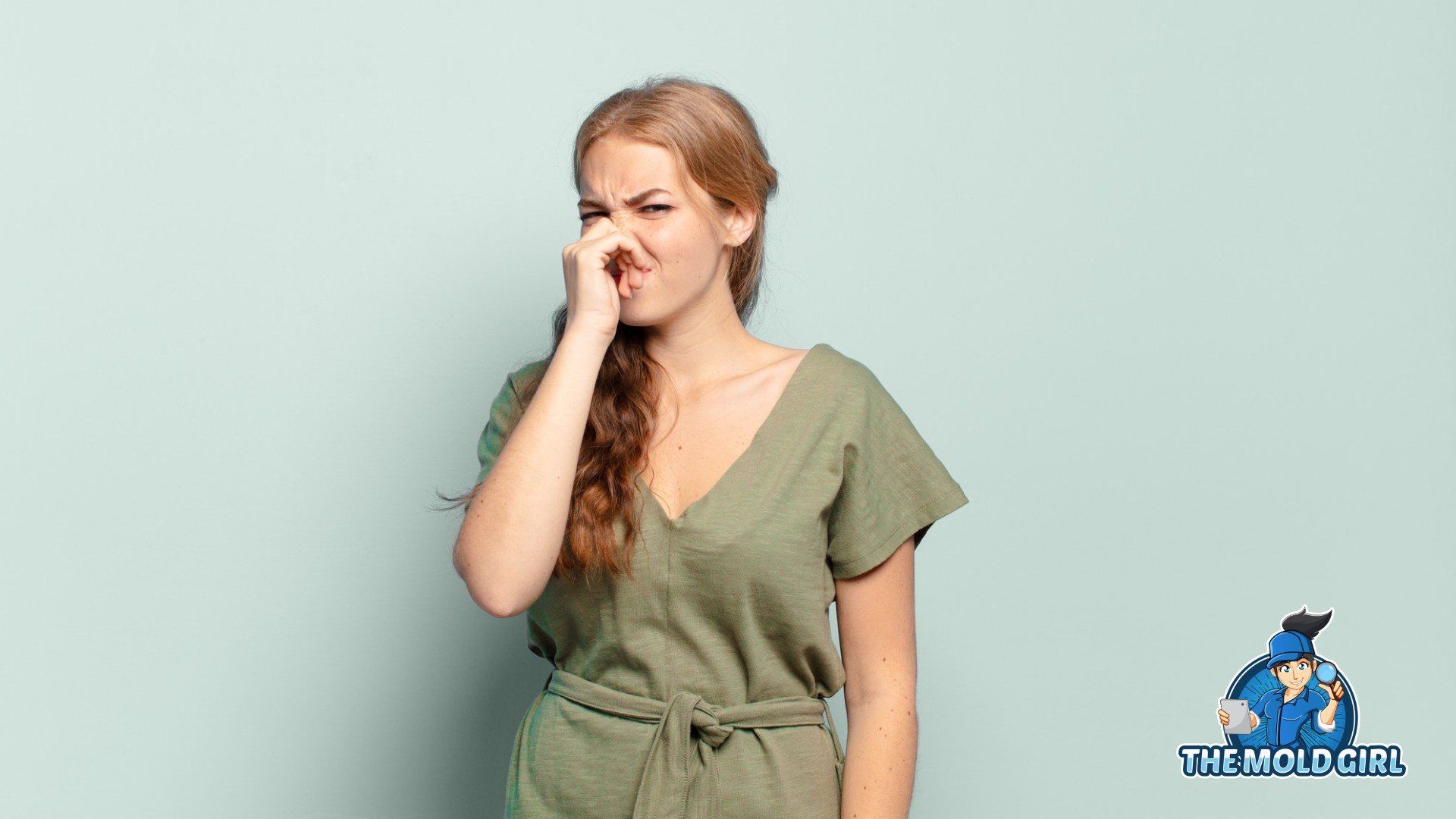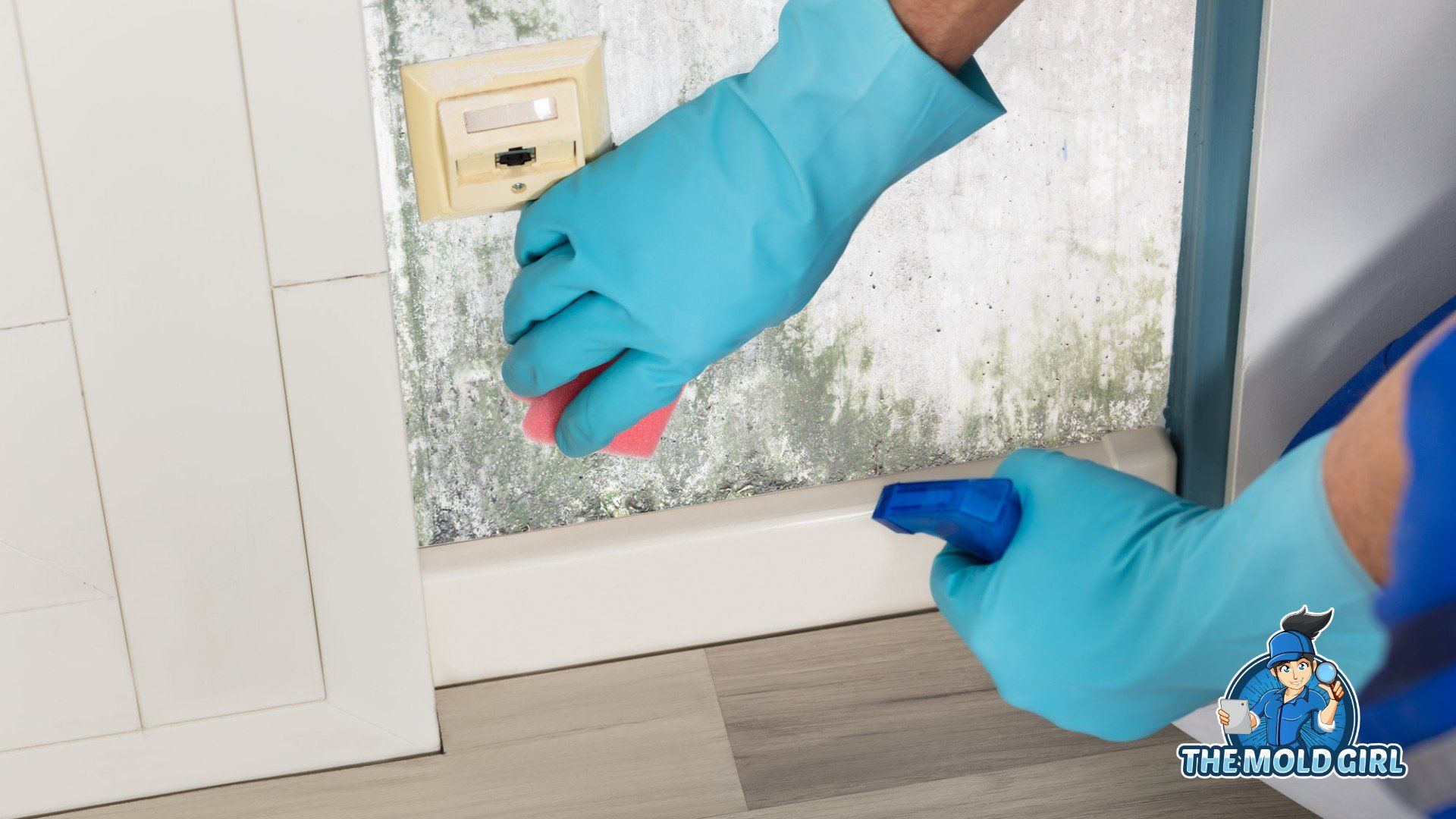Have you ever had mold growing inside your home? If not, you should really check it out because it could be causing serious health problems.
What Is Indoor Mold?
Mold is a fungus that grows on surfaces such as walls, ceilings, floors, and furniture. When mold starts growing in your house, it can cause serious health issues including asthma attacks, allergies, skin rashes, and even respiratory infections.
If you suspect that there is mold growing in your home, call us right away! We offer indoor mold remediation services that can help clean up any type of mold problem.
The Health Effects of Mold Growth Indoors
Mold is everywhere, and it doesn't discriminate between indoor and outdoor spaces. It can grow anywhere, from inside your home to outside your building. The problem is that many homeowners don't realize that mold can damage their property and pose serious health risks.
In fact, mold has been linked to asthma attacks, respiratory problems, allergies, and other illnesses. When mold grows indoors, it can spread through your house and into your air ducts, causing a variety of issues. Fortunately, there are ways to prevent mold growth and remove it if it does occur.
First, make sure that your home is properly ventilated. Open windows and doors allow air to circulate freely, keeping mold spores from growing. Second, clean surfaces regularly to prevent mold from forming. Cleaning your walls, floors, furniture, and appliances helps to eliminate moisture and prevent mold from growing. Finally, consider installing a dehumidifier to dry out your space.
Mycotoxins
Mold produces toxic chemicals called mycotoxins. These toxins can cause severe illnesses and death. Toxic mold can grow indoors and outdoors. It can be found in homes, schools, offices, hospitals, restaurants, hotels, and other public places. It can also be found in soil, water, plants, and animals. Some types of mold produce mycotoxins, but others do not.
Symptoms of Mold Exposure
Mold exposure symptoms include sneezing, coughing, watery eyes, headaches, fatigue, skin rashes, and respiratory problems. Symptoms may be mild or severe depending on the type of mold and where it was found.
Black mold grows on damp surfaces and produces toxic chemicals that cause serious health issues. Gray mold grows on dry surfaces and produces toxins that irritate the lungs and nose. If you're concerned about mold exposure, you should contact a professional who specializes in mold removal.
Asthma
Mold growth indoors affects asthma. In fact, mold spores are the number one cause of asthma attacks. They're everywhere, including inside homes where they grow in damp areas.
If you have asthma, you should be aware of this because mold spores can trigger asthma symptoms. So when you're planning a remodel, consider removing moldy materials and cleaning up moldy areas.
To prevent mold growth indoors, keep humidity at 50% or lower. This includes keeping windows open during the day and closing them at night. Also, clean up spills and remove wet items immediately.
Another way to reduce mold growth indoors is to use air purifiers. These devices filter out mold spores and other allergens.
Causes and Growing Conditions
Molds grow when there is too much moisture in the air. This happens when indoor environments stay damp for long periods of time, especially in areas where people spend most of their time indoors.
The main cause of mold growth is excessive moisture in the air. But there are many other factors that contribute to mold growth, including poor ventilation, inadequate lighting, and improper cleaning practices.
If you're looking to prevent mold growth, keep these tips in mind:
• Ventilate frequently. Mold grows best in moist conditions, so open windows and doors often to let fresh air circulate through your home.
• Keep the area well lit. Dark spaces encourage mold growth because they trap moisture.
• Clean regularly. Regularly clean surfaces and remove debris that collects dust and dirt.
• Use a dehumidifier. Dehumidifiers work by removing excess moisture from the air. They're effective at keeping mold away, but they may not be able to completely eliminate it.
• Seal cracks and leaks. Cracks and holes allow moisture to seep inside. Seal them with caulk or tape.
• Avoid wet carpeting. Wet carpeting can attract mold spores. So if possible, avoid walking barefoot on wet carpets.
• Don't use bleach. Bleach kills bacteria, but it doesn't kill mold spores.
• Consider installing a humidistat. Humidistats measure indoor humidity levels and automatically adjust fans and lights to maintain a comfortable level.
• Check for signs of mold growth. Look for dark spots on walls, ceilings, floors, and furniture. These spots indicate mold growth.
• Remove any moldy items. Mold thrives in warm, moist environments, so don't leave anything sitting around for very long.
• Monitor humidity levels. You can buy a humidity gauge to monitor indoor humidity levels.
If you find mold growing in your home, follow these steps to get rid of it:
• Wash everything. Washing removes dust and dirt that collect on surfaces and traps moisture.
Hidden Mold
Mold spores are microscopic and invisible to the naked eye, but they can cause serious health problems when inhaled. They can be found indoors and outdoors, and they grow quickly in warm, humid conditions.
If you find mold growing inside your home, it's important to get rid of it right away. But because mold spores are so small, they can easily pass through air filtration systems and remain undetected.
That's where mold inspectors come in. They use special equipment to detect mold growth and identify its source.
They can inspect homes, businesses, and public buildings, including schools, hospitals, and government offices. They can also test soil samples and water sources for mold contamination.
But don't worry - mold inspectors aren't just used by homeowners. They're also used by building managers, landlords, and property owners who want to ensure that their properties are safe from mold.
In brief, mold inspections can help keep your home healthy and free from mold.
Assessment
Mold inspections are not just for homeowners anymore! They're becoming increasingly popular among businesses that need to inspect their indoor environment for mold growth.
Professional mold assessments are conducted by trained professionals who use specialized equipment to detect mold growth and identify its source. This type of mold inspection is usually performed after a water leak or flood, when there's visible mold growth, or when there's a strong odor of mold.
The most common types of mold found indoors include black mold (also known as Stachybotrys atra), white mold (also known as Penicillium spp.), and green mold (also known as Cladosporium spp.). These three types of mold are often referred to together as "indoor molds."
If you suspect mold growth in your home or office, contact your local building inspector or a professional mold assessment company.
Sampling
Air samplers are used to detect airborne mold spores. Surface samplers are used when there's visible mold growth on surfaces. Both types of samplers are used in indoor environments.
The most common type of air sampler is called a cyclonic collector. It uses centrifugal force to separate large particles (such as dust) from small particles (mold spores).
Surface samplers include swabs, spore traps, and petri dishes. Swabs are used to collect samples from surfaces. Spore traps are placed near suspected areas of mold growth. Petri dishes are used to grow mold cultures.
Air Sampling
Air sampling is used to detect airborne spores of mold. Spores are microscopic particles that float through the air. They're invisible to the naked eye, but they can cause health problems when inhaled.
The most common way to collect air samples is with a spore trap. These devices capture airborne spores and hold them until they're collected. Airborne spores can be found in homes, offices, schools, hospitals, restaurants, hotels, and many other places.
Spore traps are available in different sizes and shapes, including handheld units, room-sized systems, and portable samplers. Some models are designed to collect only certain types of spores, such as those associated with mold growth. Others are capable of collecting a wide variety of spores.
To test for mold, you need to collect air samples in locations where mold is suspected. In some cases, you may need to take multiple samples over several days to get enough data to determine whether there's mold in the area.
If you suspect mold, you should contact an expert who can help identify the type of mold and recommend appropriate cleaning methods.
Swab and Surface Sampling
Surface sampling measures the amount of mold spores deposited on surfaces. With swabbing, a cotton swab (or similar) is rubbed across the area suspected of having mold. The swab is placed onto a growth medium where the mold grows. The growth medium is then taken to the lab for analysis.
The swab can be rubbed on an agar medium to grow the mold on the growth medium. The final result indicates the presence of mold and its level of concentration.
Molecular methods, such as quantitative polymerase chain reaction (qPCR), can be used to identify and quantify the mold species. These molecular methods are more sensitive than traditional culture techniques. However, they require expensive equipment and highly trained technicians.
Surface sampling can provide detailed information about the mold. It can tell if the mold is airborne or non-airborne. It can also determine the type of mold and whether the mold is growing indoors or outdoors.
However, surface sampling does not directly measure the amount of mold exposure. It only tells us what we already know - there is mold in our environment.
Bulk and Dust Sampling
Bulk removal of material from the infected area is used to identify the mold in the sample and quantify the amount of mold in the sample. Dust samples can be taken from surfaces such as floors and furniture, and then analyzed by culture-based or culture-independent methods.
A quantitative polymerase chain reaction (qPCR) is a DNA-based molecular method that can identify fungi species. The Environmental Relative Moisture Index (ERMI) can be used in epidemiologic studies to assess the mold burden of homes in the U.S. The ERMI consists of a list of 36 fungi commonly associated with damp houses and can be measured using qPCR. Like swabbing and surface sampling, bulk removal of material from the affected area can give detailed information about mold sources, but cannot accurately measure the level of exposure to those sources.
Remediation
Remediation should be done by professionals who know what they're doing. Mold grows when moisture and organic matter meet. Moisture can come from many sources such as leaky pipes or showers. Organic matter includes things like hair, skin cells, and dead insects. Cleaning up mold requires using chemicals that kill the fungus. The goal of the process is to stop the mold from spreading into other areas.
Cleanup and Removal Methods
Cleanup is the process of eliminating mold and removing contaminated materials. Killing mold with chemicals isn't enough because chemical substances and proteins causing reactions in humans remain in the dead mold. These methods are used.
- Remediation: Before remediating the moldy area, the area is assessed for safety, cleaned up, and properly approached. The EPA provides the below instructions:
- HVAC cleaning should be done by a trained technician.
- Goggles with a half-or full face respirator protect against mold spores. Disposable hazmat suits can be used to keep out particles down to one micrometer, while personal protective equipment keeps mold spores from entering skin wounds. Rubber gloves are made of rubber, and nitrile gloves are
- When microbes can be seen growing on solid wood surfaces such as framing or underlayment, wire brushing or sanding is applied.
- Dry ice blasting: It removes mold from wood and cement but may spray mold and its products into the surrounding air.
- Wet-vacuuming: Wet vacuuming uses water to clean up wet materials. It is an EPA-approved method for cleaning up wet materials.
- A damp wipe: Removing mold from non-porous surfaces by wiping or scrubbing them with water and detergent and then drying quickly.
- A HEPA vacuum cleaner is used in remediation areas after material has been dried and contaminated materials have been removed. Collected debris and dust is stored so that it doesn't get released into the environment.
- Debris disposal: Sealed in the remediating area, debris is usually disposed of with ordinary construction waste.
Equipment
Equipment used in mold removal includes:
Moisture meters are used to measure the amount of water vapor in the air. They're typically used in conjunction with humidity gauges to determine the relative humidity (RH) of indoor environments.
Humidity gauges are used to measure the absolute humidity of the air. Absolute humidity refers to the total mass of water vapor in the air. Relative humidity refers to the ratio between the actual amount of water vapor in the room and the maximum amount of water vapor possible in the air.
Borescopes are long tubes with a light source at one end and a video camera at the other. The borescope illuminates areas where there may be mold growth. Mold spores are microscopic organisms that grow when conditions are right.
Digital cameras are used to take pictures of areas that need an inspection. These photos are sent to a technician who evaluates them using software that analyzes the images.
Personal protective equipment (PPE) includes respirators, gloves, impervious suits, and eye protection. PPE protects technicians from inhaling dangerous chemicals and prevents them from touching contaminated surfaces.
Thermographic cameras use heat instead of visible light to detect moisture. Infrared thermography uses invisible radiation to create images of temperature differences. This technology allows technicians to see hidden moisture problems in buildings.
Protection Levels
Mold remediation is expensive, so it's important to protect your employees during the process.
There are different levels of protection depending on how much mold is present. The higher the level of contamination, the greater the risk to the worker.
When choosing a level of protection, consider the size of the area being cleaned. For example, if you're cleaning up a small room, you probably won't need to wear protective gear like respirators. But if you're cleaning up an entire house, you'll definitely need to wear respirators.
You can also consider the type of mold you're dealing with. Some types of mold require special equipment to clean them up.
For example, black mold requires specialized equipment to remove it safely. So if you're working on a home where black mold is present, you'll need to hire a professional to do the job.
In addition to protecting your employees, you'll also need to protect yourself. Mold spores can cause health problems, especially if they enter your lungs.
So always wear a mask and other protective gear when cleaning up contaminated areas.
Residential Mold Prevention and Control
Mold is everywhere. Even if you live in a house without a basement, crawlspace, or attic, you could still have mold growing inside your walls.
You can prevent and control mold by cleaning and repairing rain gutter systems, preventing moisture seepage into your home, maintaining indoor humidity levels, and clearing up water damage.
There are also ways to prevent and control mold indoors. The first step is to monitor indoor humidity levels. This way, you can determine where moisture is coming from and take action accordingly.
Next, you can treat exposed structural wood or wood frame with an EPA-approved mold treatment.
Finally, you can install an exhaust fan in your bathrooms to remove moisture and other contaminants.
These steps will help you prevent and control mold growth in your home.
Conclusion
In conclusion, indoor mold can be dangerous to your health. If you have any symptoms such as coughing, sneezing, wheezing, shortness of breath, chest tightness, or eye irritation, it may be due to exposure to indoor mold. To prevent the spread of mold, clean your home regularly and remove moisture from the air.
FAQs About Indoor Mold
Why is mold growing in my home?
Mold causes allergies and other health issues when inhaled or touched. Mold can grow in moist areas, such as basements, bathrooms, kitchens, and laundry rooms. It produces allergens, irritants, and mycotoxins. These toxins can be harmful if ingested or exposed to them. Mold allergy is a common problem. People with asthma are most likely to get sick from mold. Allergies can occur after being exposed to mold. Other symptoms include irritation of the eyes, skin, mouth, nose, and throat.
How do I get rid of mold?
Mold spores float around the house. You need to remove them from the air before they cause any problems. Removing the mold requires cleaning up the mold. Fixing the water problem means fixing leaks, etc., so that mold doesn't form. If you clean up mold, but don't repair the leak, then the mold will come back.
Why is mold growing in my home?
Mold is dangerous because it can cause serious health problems. To avoid getting sick, wear protective gear. Use gloves, goggles, and a N-95 respirator when cleaning. Don't touch moldy things with your bare hands.Wear goggles. Goggles without ventilation holes are recommended. Mold and mold spores should be avoided.
How Do I Know When the Remediation or Cleanup is Finished?
Before the cleanup or remediation is considered complete, you must have completely fixed the problem with the water or moisture.
You should have finished cleaning up the mold. Mold and musty smells should not be visible. Please be aware that mold can cause discoloration and cosmetic damage.
If you've visited the site(s) within the last few days, you should be able to see no signs of water damage, mold growth, or any other issues.
People should be able to occupy or reoccupy the area without having any health complaints or physical symptoms at all.
It's ultimately a judgment call; there's no easy answer.
Source: epa.gov
How common is mold in buildings?
Mold is very common indoors.
A 2017 study found mold in almost every public building they looked at, with an average of approximately 14 instances of mold per public building.
Source: healthline.com
What Is a Mold Allergy?
If you have an allergic reaction that lasts for several seasons, you may have an allergy to the spores of mites or other fungi. Molds live everywhere. Upsetting a moldy surface can cause the spores to be released into the air.
Fungi are mold and mildew. Plants and animals are different from each other in how they reproduce and how they grow. Spores travel through the air. They are the seeds of fungi. Spores can be spread by dry, windy weather conditions. When the air is humid, others spread by the fog or dew.
Some people get an allergic reaction when they inhale the spores. Allergies from mold spores are most common from late spring through early fall. But fungi grow in a variety of places, both indoors and outdoors, so allergic reactions can happen any time of year.
Only a handful of mold species cause allergic reactions. Many fungi grow on decaying wood, in compost piles, and on grasses and grain. Unlike pollen, mold spores don't die with the first killing frosts. Most outdoor molds will not be active during the winter months.
In the spring they sprout from seeds that were stored during the winter. Fungi grow best in moist environments. They are usually found in the bathroom, the kitchen, or the basement.
Source: aafa.org
CONTACT THE MOLD GIRL TODAY!
The Mold Girl will do everything we can to ensure your experience with us is excellent.
REQUEST A FREE ESTIMATE
CHECKOUT RECENT POST




